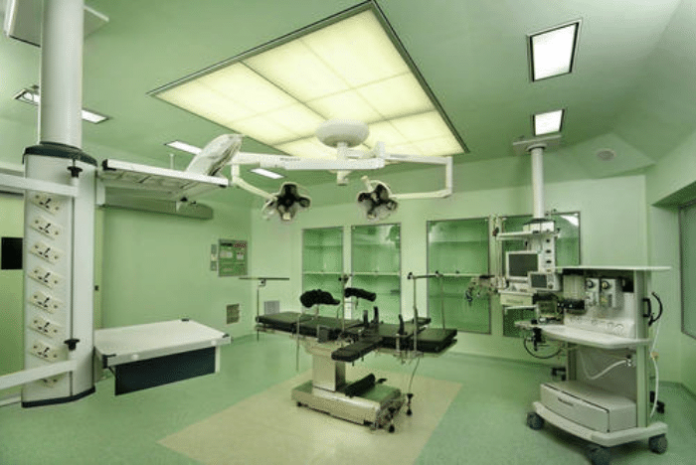Healthcare is undergoing a transformation. In terms of developing better business models for futuristic healthcare facilities, we’ve progressed and are getting better.
We, as twenty-first-century healthcare experts, are also humans who have had COVID! This has shifted the way we think about the healthcare system and our facilities in some ways. All around the clock, from the construction of prefabricated hospitals to the management of community-level emergencies!
We’ve seen it all and dealt with it as best we could. Following COVID, the entire healthcare ecosystem has internalised itself globally. We’re all in agreement that safety is the way to go.
First Time in India
We must continue to work on innovation, especially now that the JCI and other quality bodies are vocal about it on a daily basis—Green OT is a step ahead in this! It is a happy moment for all of us because Abbott Bureau VERITAS completed the Make in India Green OT certifications for the first time in India in 2014.
Who is eligible for a green OT certification?
This is specific to the hospital’s operating rooms. All newly constructed hospitals have a better probability of receiving green OT certifications. To comply with the green OT certification criteria, the previous OT facilities must be totally remodelled.
Let’s talk about the operational costs.
New OTs are now only created modularly. Incorporating the Green OT concept will increase the cost of production by 2-3%. When it comes to operational costs, the Green OTs will have 30-40% lower costs and higher savings. OTs are active for longer hours in today’s settings, resulting in the biggest expenditures, despite having the idea from Ayushman Bharat. For the surgical domains of hospitals, having a green OT is the best option.
The Benefits of Green Occupational Therapy Certification for Healthcare Facilities
- Operational costs are reduced, and the OT surgeons, staff, and patients are in a safe atmosphere.
- Hazardous gas emissions are maintained to a bare minimum, guaranteeing a safe atmosphere.
- Ensures improved operating room quality requirements.
- Better-trained and skilled personnel in your OR, resulting in more efficient OR operation.
- Your OT is certified for clean technology and is environmentally friendly.
Time to get familiar with this concept.
The Green OT is a certification protocol developed in India. Its goal is to create environmentally friendly and safe operating rooms through the use of green technologies. The accreditation procedure is based on examining the audited hospitals’ drafted protocols, conduct, and criteria. The auditors then certify the information.
Green OT Standards must be followed by OTs, and they must be sealed with a green and patient safety certificate.
Awarding Authority
This certificate is offered in collaboration with Abbott (multi–hospital stakeholder) by Bureau Veritas, a global leader in testing, inspection, and certification. It will ensure that operating room safety requirements are consistent. Everything beneath the roof is covered, including airflow, OT setup, anaesthetic equipment, evaluating the types of volatile agents utilised, filling systems, and so on. Cleaner practises combined with contemporary technology demonstrate a caring approach to the environment via heat care systems.
It follows the following guidelines:
- Including looping mechanisms to prevent anaesthetic gas and other radiation leaking from OTs.
- Methods for disposing of biomedical waste
- Strict anti-infective precautions are in place.
- Norms for proper ventilation
- Technology for scavenging
- Inside the OTs, there is a lot of airflow.
- Creating a standardised OT system
- Machine for anaesthesia
- Inspection of volatile agents
- Filling System Inspection
- Carbon dioxide, infrared rays, and radiation emission restrictions are being investigated.
- Controlling the temperature and humidity
Deciding whether one facility should opt for Green OT Certification
Having worked in the field for over 16 years, I believe that technological advancements are beneficial to us. We are all aware that, according to statistics, surgeries are the primary source of revenue for any hospital. If we want the revenue to keep flowing, we must work on improving the operating rooms. They are not only safe for patients, but also for OR personnel and surgeons. It is to make the world a better place for future generations. We talked about the financial commitment and the huge reduction in operating costs. As a result, as a futuristic management consultant, I believe that hospitals should have the Green OT accreditation
Climate change might have irreversible negative health consequences by 2030, pushing more than 100 million people back into extreme poverty, according to estimates. Cardiovascular disorders, re
respiratory illnesses, and other health problems have a clear link to air pollution and the growth in emissions that fuel climate change, which will exacerbate these problems. We must recognise that the health sector plays a role in these environmental challenges as well. The health-care industry has a responsibility to adapt and mitigate the negative impact it is having on the environment.
Overall, we recognise that global warming is having a negative influence on our planet. In the healthcare industry, green modular OT is a game-changing concept. It’s a step toward protecting the planet from the effects of global warming. Green OT has certified hospitals such as Max Super Speciality Hospital Shalimar Bagh, Artemis Hospital Gurgaon, and Fortis Hospital. It is past time for each of us to contribute to the planet’s survival.
It is critical to recognise that not only the environment will benefit from this transition, but hospitals will as well. The total waste generated by the OT can be reduced by nearly 30% in hospitals. It will reduce the patient’s chemical exposure. Patients are becoming increasingly aware of and concerned about the safety of the treatments provided by hospitals. They appear to favour hospitals that have been accredited by a reputable international body. This certification will assure infection prevention in the operating room, as well as safe anaesthetic techniques, surgical teams, and quality assurance mechanisms. It truly is a win-win situation for all!
About the authors:
Dr. Tarun Katiyar – Principal Consultant Hospaccx Healthcare Business Consulting
















